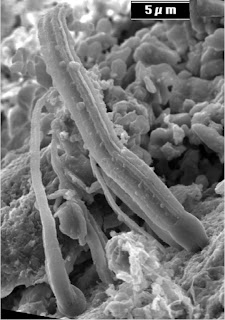Monthly Archives: March 2011
More surprises from PAMELA
Convincing proof of extraterrestrial life?
Commentaries may focus entirely on Dr. Hoover’s paper, or you may speculate about the implications, e.g, the evolution of life on other planets, the origin of life on Earth, our genetic ancestry, “are we alone?” etc.
Oh, well. And to be honest, given the comments that actually appeared on the webpage of the Journal, I’d be surprised if they were actually peer-reviewed at all (as claimed by the editors).
Despite the premises, I tried to develop an informed opinion, to answer the questions of friends and family who read about the news everywhere on the web. After reading about it here, here, here and here, I am tempted to say that the claim is far from robust, and, to say the least, it should be taken with a huge grain of salt.
Do we
Abstract: Protons and helium nuclei are the most abundant components of the cosmic radiation. Precise measurements of their fluxes are needed to understand the acceleration and subsequent propagation of cosmic rays in the Galaxy. We report precision measurements of the proton and helium spectra in the rigidity range 1 GV-1.2 TV performed by the satellite-borne experiment PAMELA. We find that the spectral shapes of these two species are different and cannot be well described by a single power law. These data challenge the current paradigm of cosmic-ray acceleration in supernova remnants followed by diffusive propagation in the Galaxy. More complex processes of acceleration and propagation of cosmic rays are required to explain the spectral structures observed in our data.

